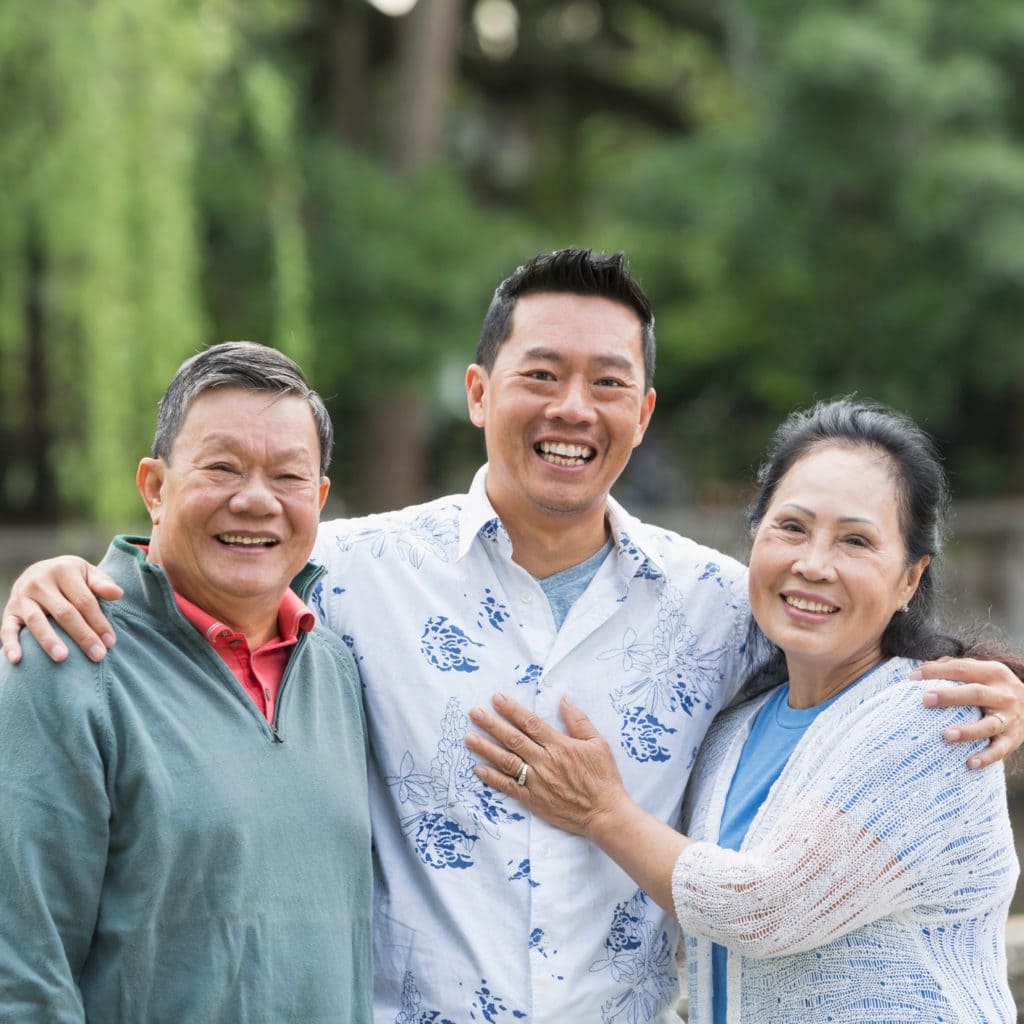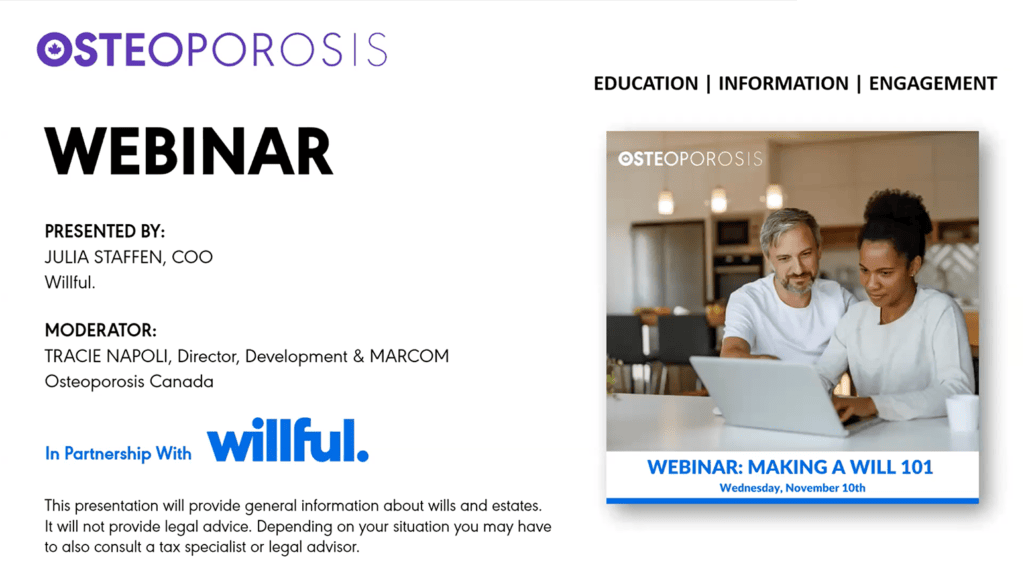Osteoporosis Canada and Willful
Osteoporosis Canada helps educate Canadians on the importance of bone health and improve the quality of life for those diagnosed with osteoporosis.
Many supporters of Osteoporosis Canada find peace of mind knowing they have provided for a charitable organization that has enriched their lives or the lives of their family members. Legacy gifts are important sources of revenue for research and other projects and may provide you with various tax benefits.
Osteoporosis Canada is proud to partner with Willful, a simple to use and secure online tool that will walk you through, step by step in setting up your will.
As part of our partnership, you will receive $20 OFF any Willful plan with the code OSTEO20 which will be donated to Osteoporosis Canada.

Why Do I Need A Will?
A will ensures that your wishes are known by your family and the law when you pass away. It contains important instructions on how to distribute your assets, who will be in charge of closing up your estate, who should take care of your children and/or pets, and which charities you’d like to leave gifts to. It ensures that you’re in the driver’s seat of these key decisions rather than the courts. It also cuts down on the time and cost of settling your estate, meaning that your beneficiaries will be able to receive the gifts you’ve left for them much quicker.
Without a will, the government uses a provincial formula to distribute your estate and appoint people to take on key roles like executor and guardian. Their formula may leave out important people and charities that you would have liked to support or name people for important roles that you might not have chosen yourself. Dying without a will also involves delays, expenses for your estate, and added stress for loved ones during an already difficult time.
Leave A Legacy Gift To Osteoporosis Canada
A legacy gift (or bequest) is a gift in your will left to a charity, school, or non-profit organization. It can be a piece of property, cash amount, or percentage of your estate. Legacy giving enables Osteoporosis Canada to educate, empower and support individuals and communities on bone health and in the risk-reduction and treatment of osteoporosis. Even a small gift makes a huge difference when you’re gone.

How Do Legacy Gifts Help Organizations Like Osteoporosis Canada?
An AngusReid survey commissioned by Willful found only 12% of Canadians plan to leave a gift to charity in their will. Willful is working hard to increase that number! Since Willful’s launch, they’ve enabled over 7,000 gifts left to charities in wills with over $30 million in cash gifts alone. No matter how small the legacy gift, a little goes a long way. By leaving a gift in your will, you will be leaving a legacy that supports over 2 million Canadians affected by osteoporosis.
You can learn more about leaving a legacy with Osteoporosis Canada here.
How Do I Leave A Legacy Gift For Osteoporosis Canada?
People often expect legacy giving to be a lengthy, complicated process. With Willful, leaving a legacy gift is simple and involves just a few clicks. After the Special Gifts section where you assign property and lump sum cash gifts to beneficiaries, you will see our charitable giving section that allows you to leave a lump sum to Osteoporosis Canada or another charity of your choice!
It’s simple to leave a gift to Osteoporosis Canada.

If you prefer to leave a percentage of your residual estate, you can add a charity as a beneficiary. (Your residual estate is everything left after debts and taxes are paid and specific gifts are distributed).
Use the following promo code to receive $20 off when using Willful: OSTEO20
Work with your legal advisor
If you choose to work with your legal advisor and/or financial planner to remember OC in your will – contact us to learn about the various ways to leave a planned gift.
Create your will with Willful
Willful is a simple to use and secure online tool that will walk you through, step by step in setting up your will.
If you are working with a legal advisor and/or financial planner provide the following information at your appointment:
Legal Name: Osteoporosis Canada
Charitable Registration Number: 89551 0931 RR 0001
Contact: Tracie Napoli, Director, Fund Development & MARCOM
Phone: 416-696-2663 / 1-800-463-6842 ext. 2286 Email: tnapoli@osteoporosis.ca





 Osteoporosis Canada is pleased to share that long-time volunteer Dr. Hilary Jaeger is one of three leaders recognized as Honorary Fellows of the Royal College for her transformative contributions to health care and medical education.
Osteoporosis Canada is pleased to share that long-time volunteer Dr. Hilary Jaeger is one of three leaders recognized as Honorary Fellows of the Royal College for her transformative contributions to health care and medical education.